It seems we can’t find what you’re looking for. Perhaps searching can help.
Sign Up for newsletter!
Subscribe to get the latest eBook!
Hotline






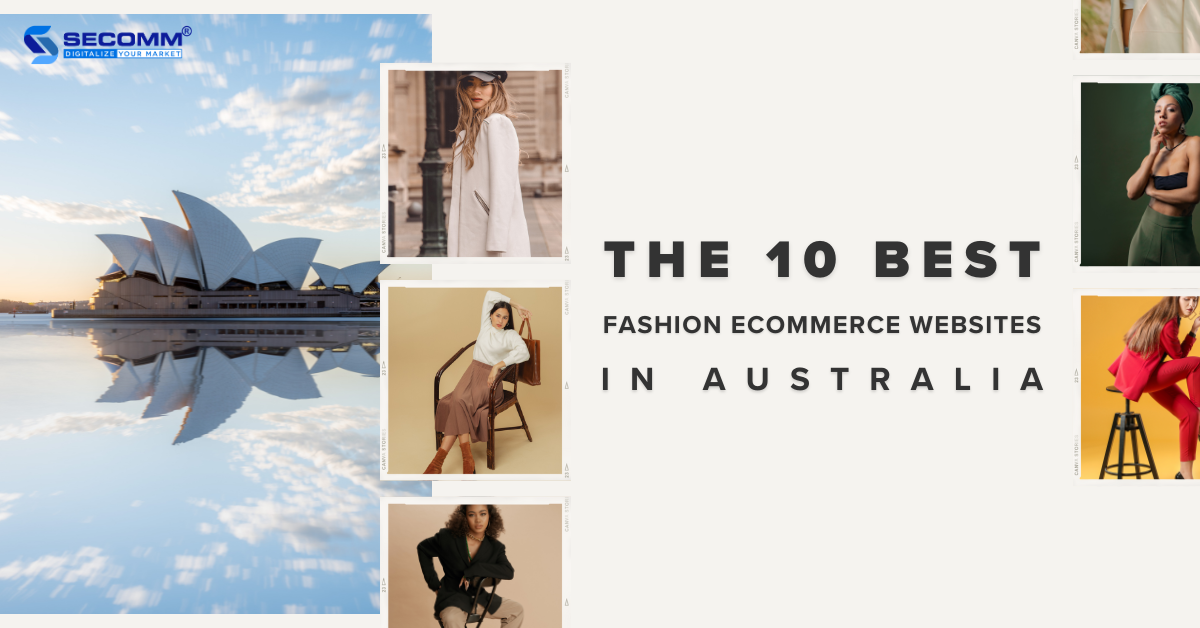
Fashion eCommerce has been booming worldwide for many years, and Australia is no exception. According to IBISWorld, the online revenue for women’s fashion alone in the Kangaroo country reached over $1.8 billion in 2023, marking a 1.1% increase compared to the same period in 2022.
Let’s explore the top 10 most prominent fashion eCommerce websites in Australia.
For a considerable period, The ICONIC eCommerce website has been recognized as a premier shopping hub for fashion enthusiasts in Australia and New Zealand. On this platform, shoppers can conveniently discover various products from well-known global brands like Levi’s, Adidas, Lacoste, Polo Ralph Lauren, and others.
The ICONIC website is designed to make it easy for customers to navigate products, make purchases, and track their orders. Beyond delivering a distinctive online shopping experience, The ICONIC also regularly updates fashion trends and provides valuable information for its customers.
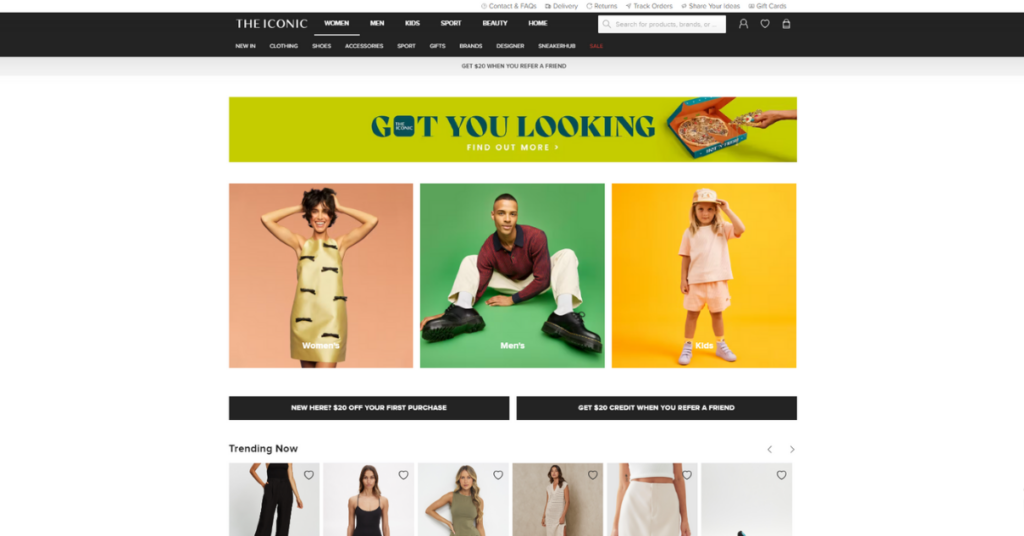
Established in 1991 in Australia, Cotton On offers a diverse range of fashion products for men, women, and children, including footwear, accessories, lingerie, and even home furnishings and interior decor in some stores. Cotton On has a widespread network of physical stores across the globe, including the UK, the US, and Canada.
Therefore, the brand has invested in an eCommerce website system to cater to various customer demographics in different markets. Additionally, Cotton On implements a customer loyalty program and various enticing promotional campaigns to attract and retain customers.

Established in 2006 in Australia, Forever New focuses on designing and producing women’s fashion collections, offering customers products with a luxurious and feminine style. Since then, the brand has rapidly grown and expanded into various markets.
The Forever New eCommerce website is built using Magento and customized with many advanced features to optimize the online shopping experience for customers. Similar to many other popular fashion retailers, Forever New implements various promotional programs and enticing offers to delight its customers.
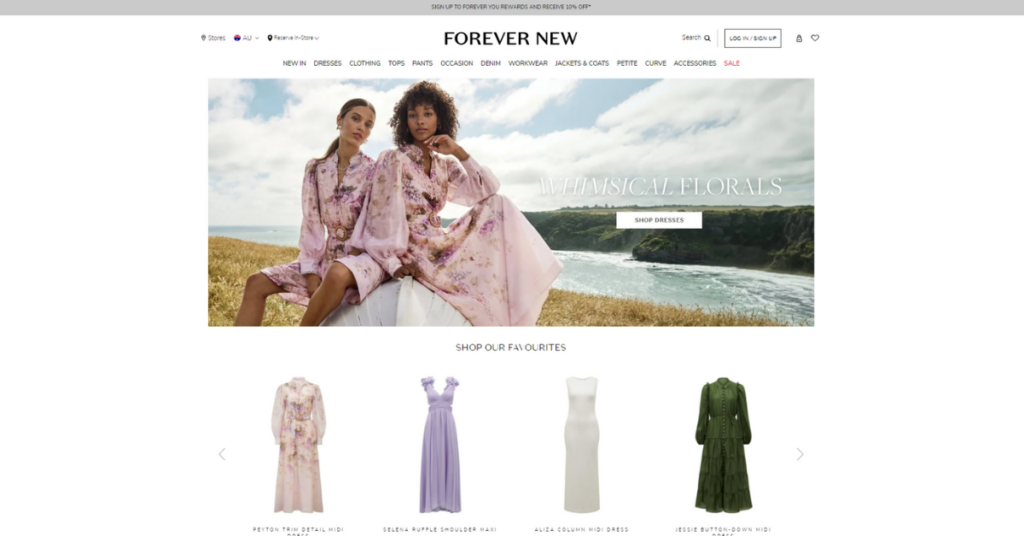
Bonds is a renowned fashion brand in the Australia and New Zealand region, offering a wide range of products for men, women, and children in diverse styles and sizes. The Bonds eCommerce website not only showcases the brand’s sophistication through a visually appealing user interface but also provides intelligent search features, secure payment processes, and detailed product information.
This approach helps Bonds retain its existing customer base while also capturing the interest of newcomers looking to experience the brand’s comfort and distinctive style.
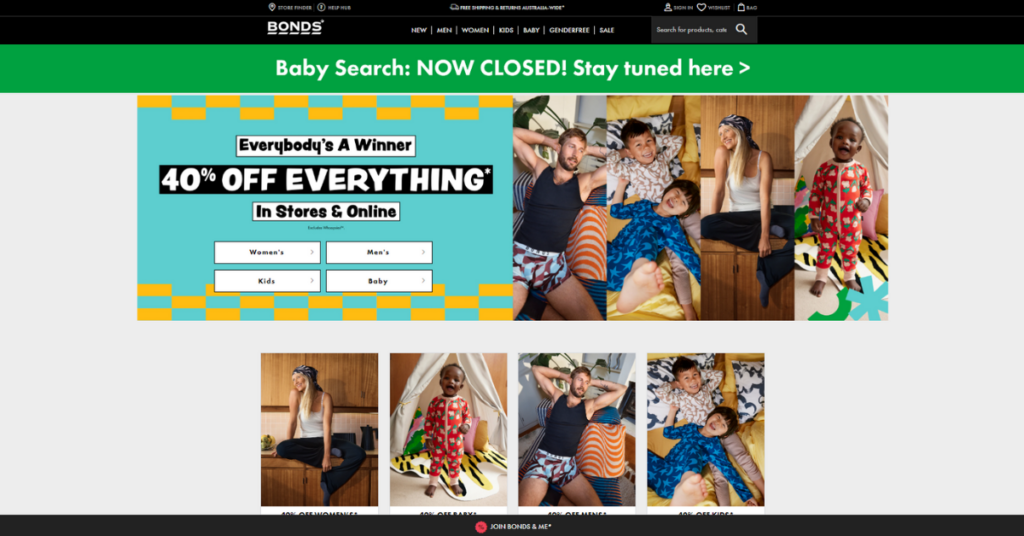
Present in the Australian market for over 80 years, Sussan has won the hearts of consumers through a blend of modern style and comfort. Today, Sussan stands as an icon in the country’s fashion industry with unique outfits that emphasize the creativity and confidence of women.
Sussan’s fashion eCommerce website is customized and optimized on the Magento platform, providing customers with a unique shopping experience. The website simplifies the checkout process and integrates multiple third-party payment methods to increase choices for customers while streamlining the shopping process and reducing cart abandonment rates.
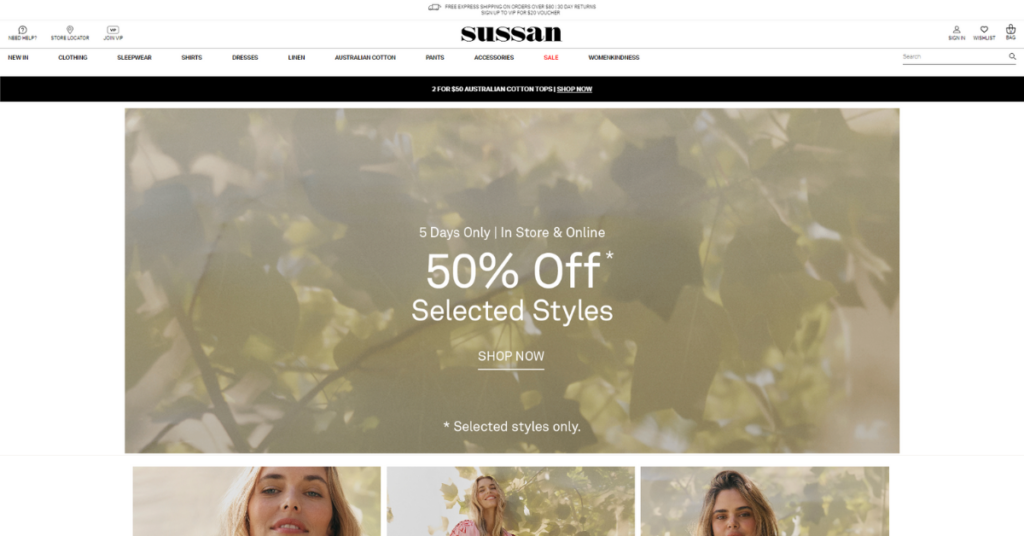
Kathmandu is known as a giant in the field of clothing and equipment for outdoor activities and adventure sports. This brand has played a significant role in making the outdoor life of Australians more exciting and comfortable.
The Kathmandu eCommerce website is developed using Magento, providing customers with a rich and easily customizable experience that can be expanded based on the business’s needs. Some notable features of the Kathmandu website include options for product sizes and colors, product comparisons, finding the nearest store, one-page checkout, and more.
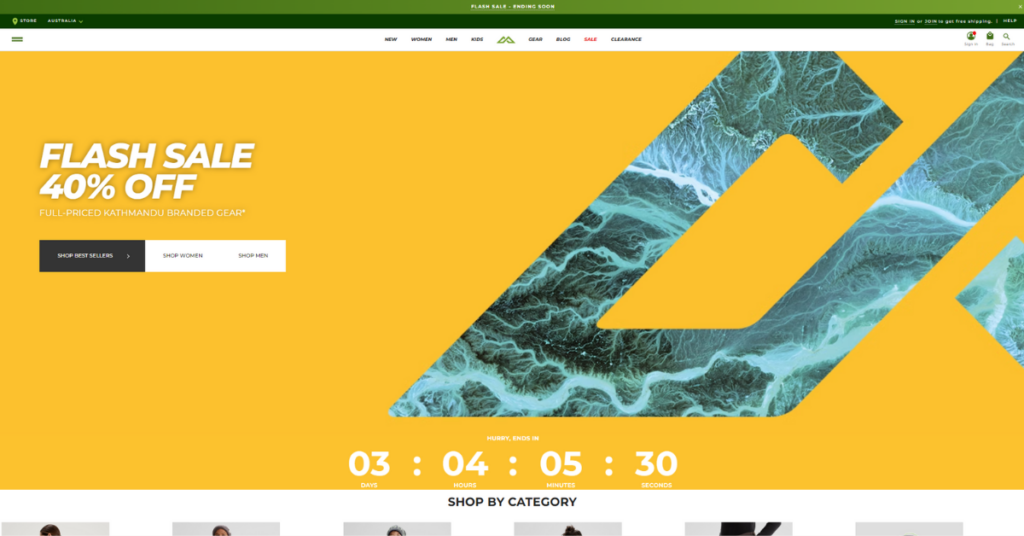
Established in 1990, Glue Store is a longstanding fashion chain in Australia. The brand specializes in offering products from top global brands such as Adidas, Nike, Stanley Tumblers, UGG, and various other streetwear labels.
In addition to its nationwide chain of stores in Australia and New Zealand, Glue Store provides customers with an online shopping experience through an eCommerce website built on Shopify. Glue Store has also developed a loyalty program allowing customers to accumulate points for purchases, redeemable for vouchers or gifts.
Additionally, customers can subscribe to Glue Store’s email newsletter for updates on the latest products and promotions. News and gifts will be tailored separately for male and female customers.

Sportsgirl is a fashion brand that emphasizes creativity and diversity in its collection of women’s fashion. With 70 years of history, Sportsgirl has become a popular shopping destination, inspiring individual style by combining the latest fashion trends with unique elements.
Sportsgirl has built an eCommerce website with Magento to provide an optimal customer experience, allowing for easy customization of features and system expansion to align with market development and trends. Additionally, Sportsgirl offers customers attractive deals, including discounts, buy one get one free promotion, free shipping, gift card giveaways, and a variety of payment methods.
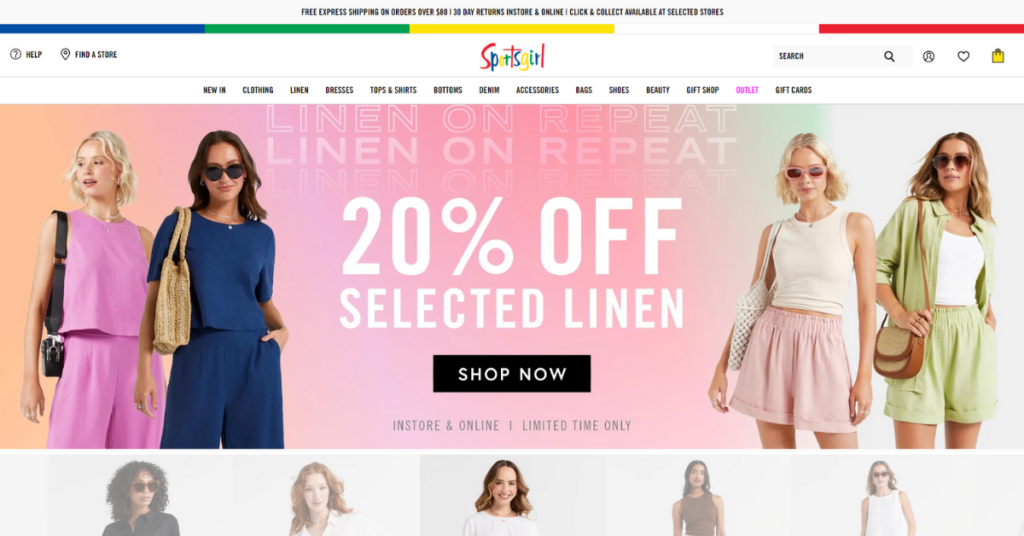
Styles Tread is a well-known shoe brand from Australia, specializing in providing products that offer comfort and premium style to consumers worldwide. Any pair of shoes in Styles Tread’s collection reflects sophistication in design and a commitment to providing a stylish and comfortable experience for the wearer.
The eCommerce fashion website of Style Tread focuses on minimalistic yet unique design elements to deliver the best customer experience, from browsing products to adding items to the cart and completing the payment process. Everything is streamlined to shorten the shopping time, encourage customers to make decisions quickly, and reduce the cart abandonment rate.
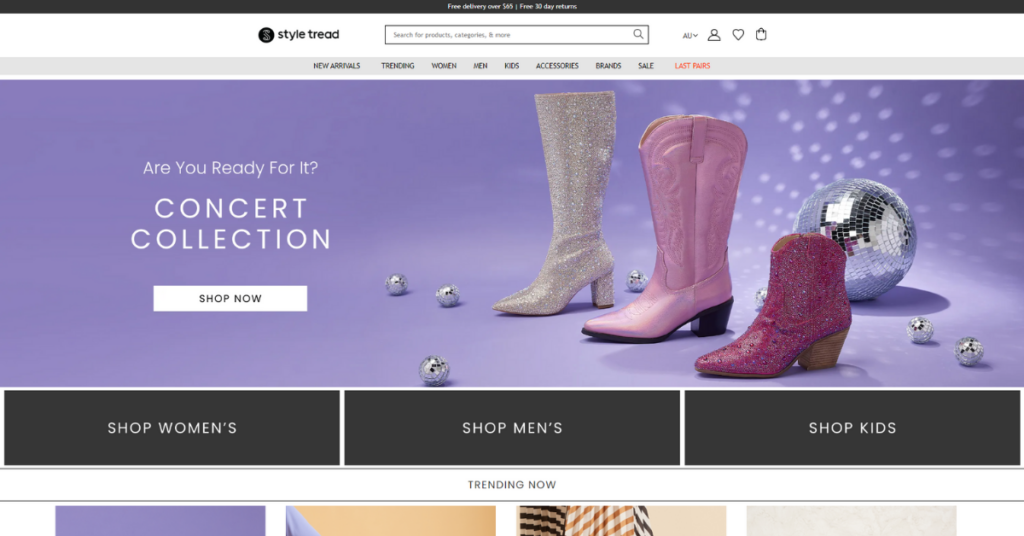
Pretty Little Thing is known as a famous Australian fashion brand specializing in creating trendy and modern outfits for young women. The combination of the latest fashion trends, product quality, and good value has helped Pretty Little Thing build a large fan base and maintain its position in the international fashion industry.
The eCommerce website of Pretty Little Thing uses a color palette of pink, white, and black with a design focus on minimalism and emphasis on user experience. Therefore, the brand deploys various unique features such as Smart Filtering & Searching, Image Search, Product Size Selection, Related Product Display, and Quick View Cart.
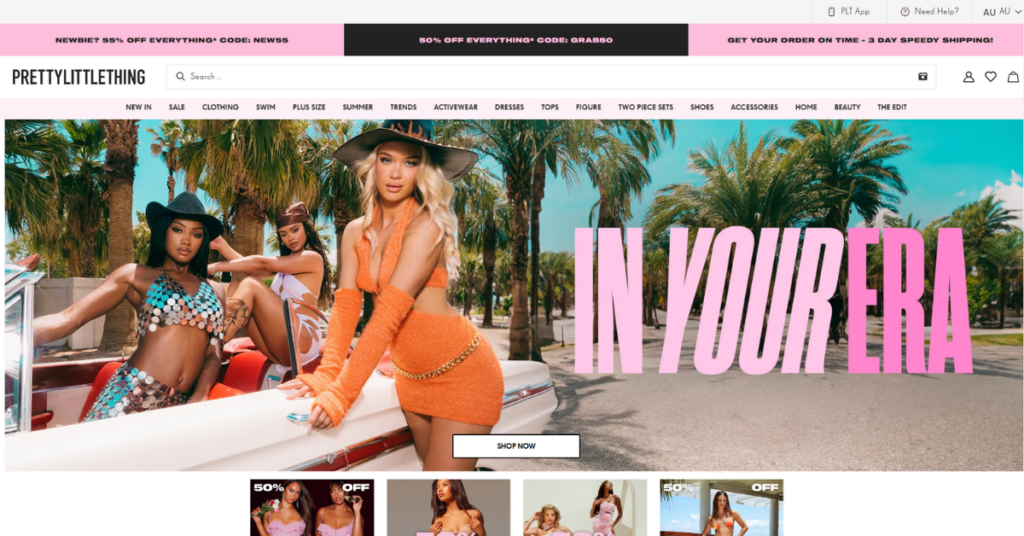
Here are the top 10 leading fashion eCommerce websites in Australia that have quickly adapted to the increasing demands in the consumer trend of online shopping.
With extensive experience in developing eCommerce websites for numerous Australian clients, SECOMM possesses a team of highly experienced experts with advanced technical skills and a profound understanding of the Australian eCommerce market.
Contact SECOMM or call the hotline (+84)28 7108 9908 for a detailed consultation!
 2
2
 4,668
4,668
 0
0
 1
1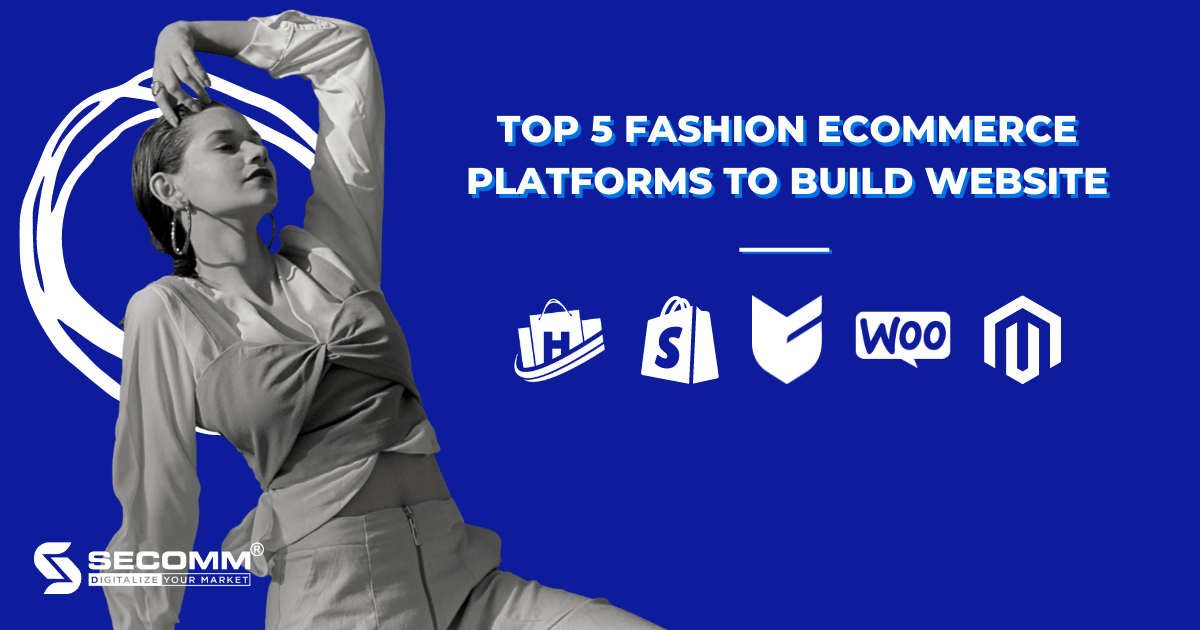
Despite the significant impact of Covid-19, the fashion industry is still on a roll, with the potential to reach $1 trillion globally by 2025 (according to Statista) thanks to eCommerce.
According to the IDEA 2022 research, the fashion eCommerce business in Vietnam is a highly competitive area, with up to 69 consumers using the eCommerce channel for every 100 fashion shoppers.
With the high potential of this commerce business, developing an eCommerce website is a must for success, necessitating the search for a platform on which to build a specialised eCommerce website for the fashion industry.
Businesses can use the following platforms to deploy fashion websites: Big Cartel, Haravan, Shopify, Woocommerce, and Magento.
UI/UX is a criterion that businesses frequently establish when creating an eCommerce website in order to develop a comfortable interface for a group of users who are passionate about fashion and maximise the capacity to engage with customers.
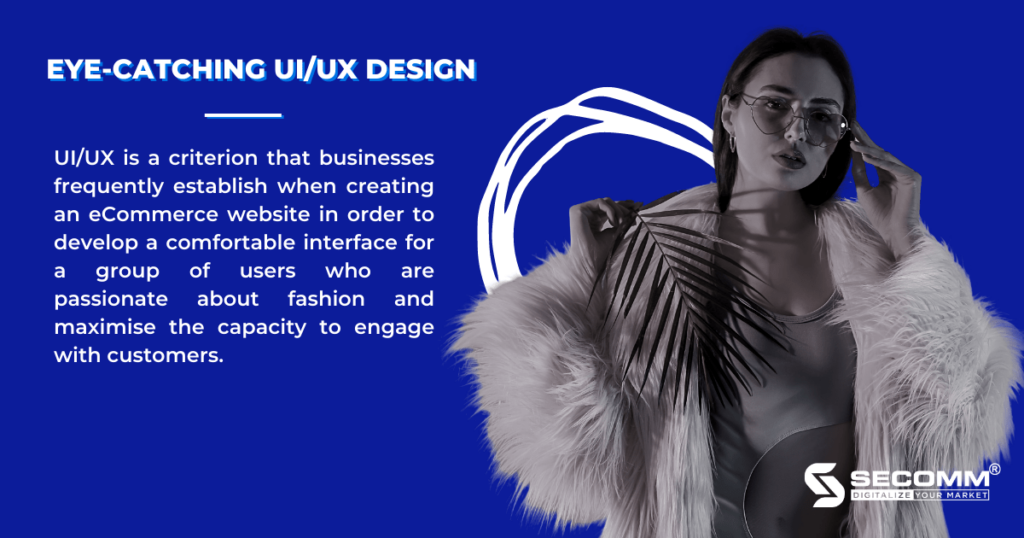
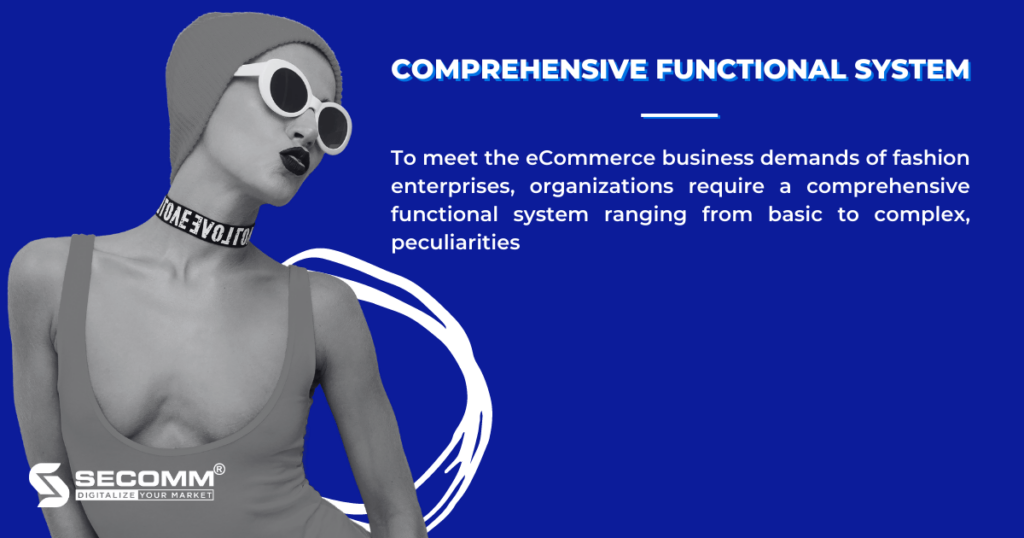
To meet the eCommerce business demands of fashion enterprises, organizations require a comprehensive functional system ranging from basic to complex, which includes:
To provide clients with a comprehensive shopping experience, fashion enterprises may frequently combine a number of payment options, shipping services, management software, and business analysis tools to enhance the e-commerce business system.
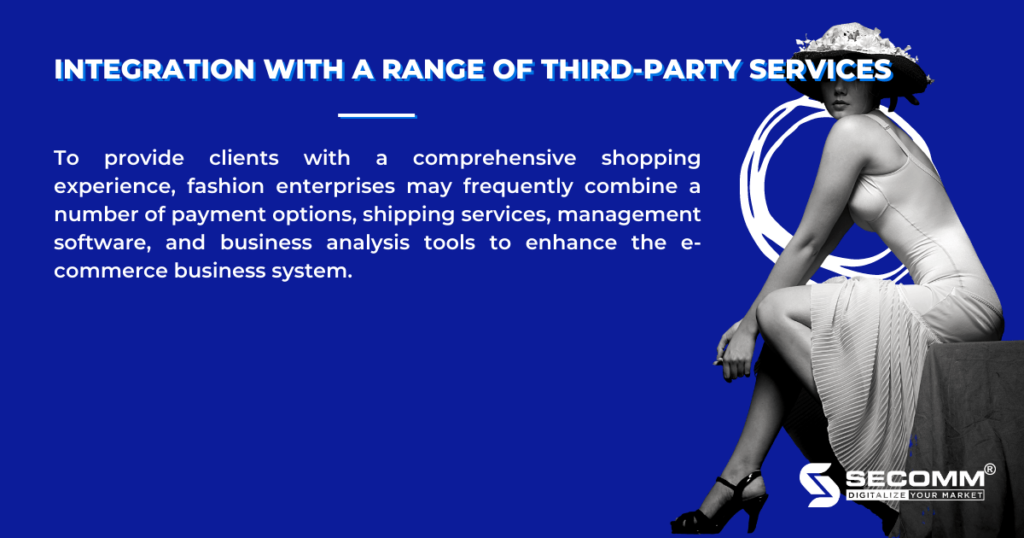
Numerous common payment options available today must be integrated into the website, including:
Often, firms at the start of a fashion business will not focus on the capacity to develop eCommerce websites in the future since platforms that enable this function are typically scarce. But, in terms of strategy, investing in a platform that supports this function can help organisations gain a competitive advantage over competitors in the market.
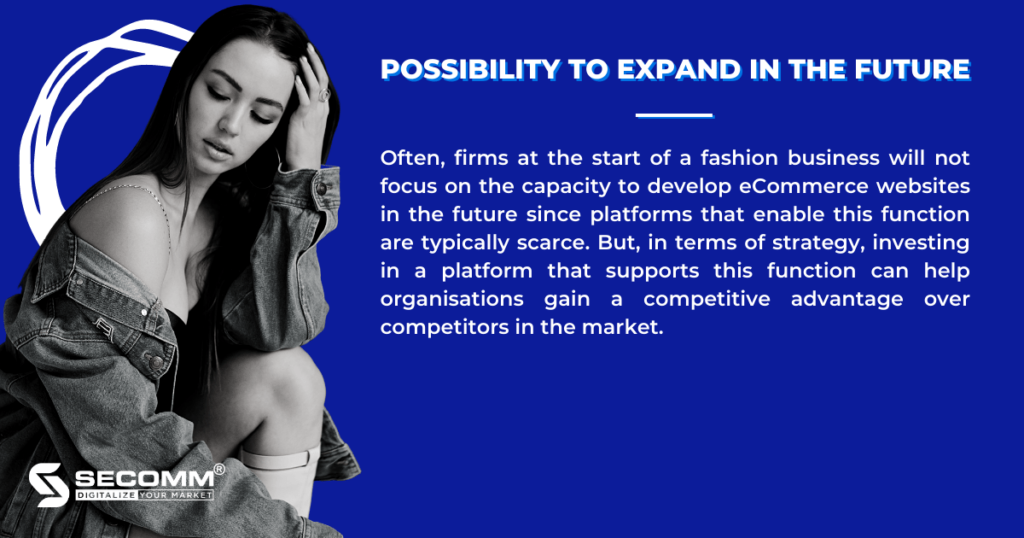
Haravan is a well-known SaaS eCommerce platform in the Vietnamese industry, offering a variety of options for both enterprises and individuals. Haravan is used by a variety of websites, including Juno, Biti’s, Maison, and others.
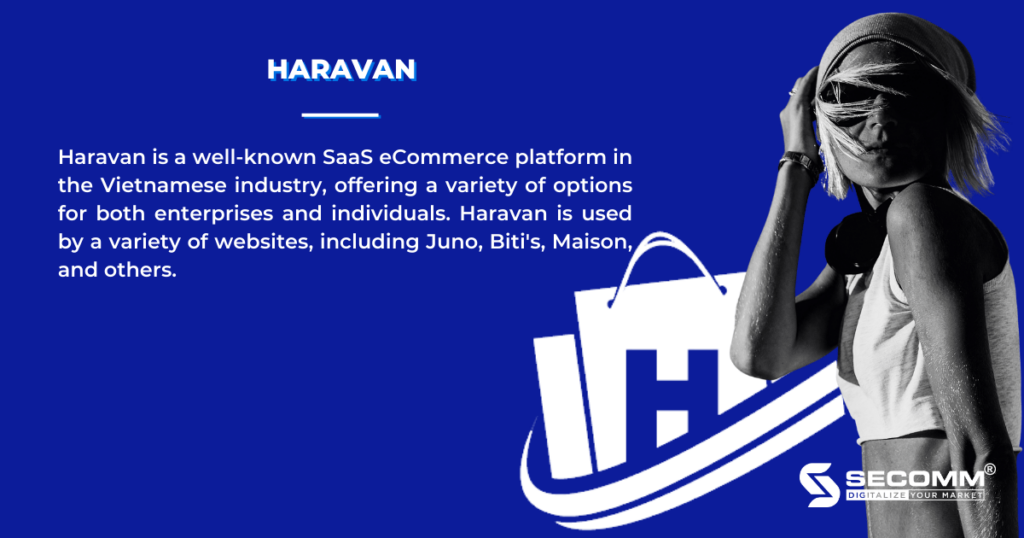
Pro:
Cons:
→ Rating: 2/4
Haravan is suitable for start-up furniture businesses or SMEs (small and medium-sized enterprises) with operations mainly in Vietnam.
Haravan is considered to have a reasonably low and diverse eCommerce website implementation cost for various businesses:
Tuy nhiên, doanh nghiệp nên suy xét khi sử dụng Haravan trong dài hạn vì chi phí giấy phép sử dụng và các tiện ích mở rộng sẽ ngày càng tăng theo thời gian sử dụng.
However, businesses should consider when using Haravan in the long term because the cost of licenses and extensions will increase over time.
Shopify is a SaaS ecommerce platform favored by the international ecommerce business community because of its fast implementation time and reasonable starting cost.
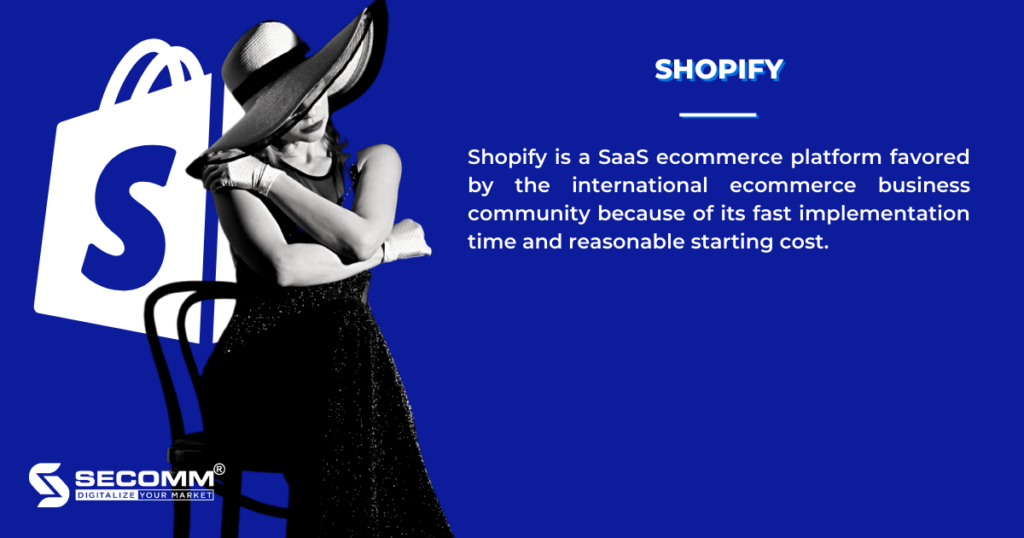
Pro:
Cons:
→ Rating: 2/4
Shopify is considered suitable for start-ups or SMEs with global operations.
Starting an eCommerce business using Shopify is quite inexpensive at beginning, with several options:
Nevertheless, the long-term cost of utilising Shopify will rise owing to rising costs for extensions, yearly usage fees, and % per transaction on the system.
The typical time to develop an e-commerce website is 1-7 days or more, depending on the system’s complexity.
Big Cartel is a platform that assists in the creation of specialised eCommerce websites for the fashion industry or for art goods such as ceramics, paintings, and photographs. Big Cartel is used by several websites such as Atakontu, Indikidual, and others.
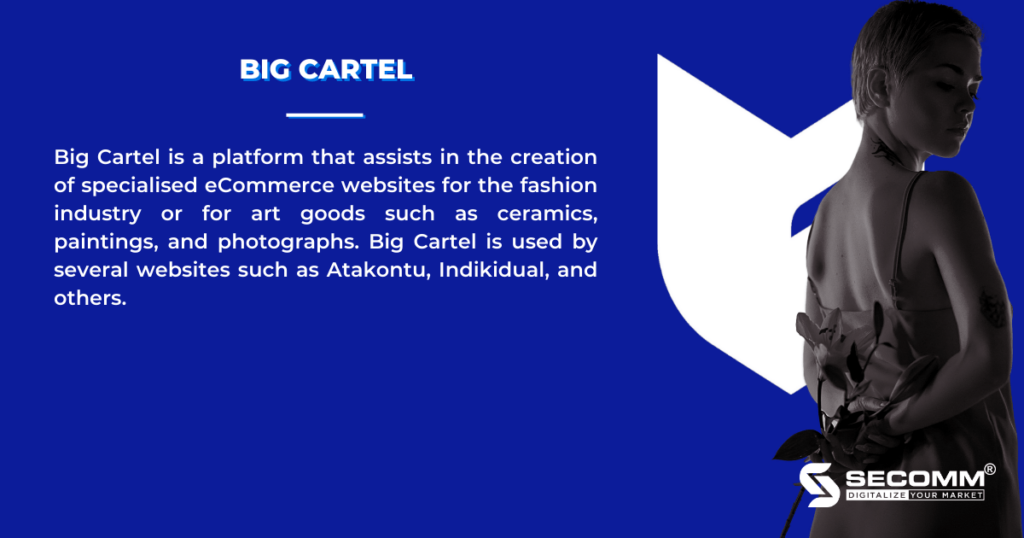
Pro:
Cons:
→ Rating: 2.5/4
Big Cartel will be appropriate for startups, SMEs, or new e-commerce participants that need to handle the complicated “issue” of fashion eCommerce.
Website setup expenses are modest, with few possibilities for solution packages such as Haravan or Shopify:
Big Cartel allows you to develop a fashion e-commerce website in as little as 1-2 weeks, depending on the system’s complexity.
WooCommerce is an open source platform, as a WordPress plug-in introduced in 2011 and allows businesses to use completely free. Popular websites using WooCommerce in Vietnam include Hai Trieu, Orchard, etc.
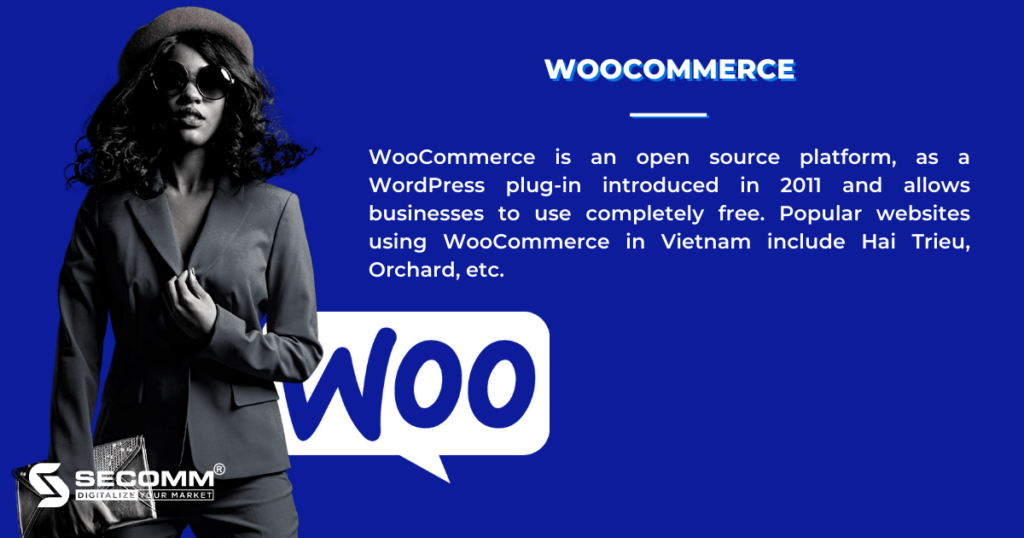
Pro:
Cons:
→ Rating: 3/4
WooCommerce is suitable for fashion businesses who are used to WordPress before and are in need of developing an eCommerce system.
Because it is an open source platform, fashion firms can use it for free; nevertheless, businesses must pay development costs while utilising the platform, such as:
An eCommerce website will take longer to create than the previous three platforms since it must be constructed from the ground up, which will take at least 1-3 months.
Magento is an open source platform with 2 versions: Magento Open Source (free) and Magento Commerce (paid). Some websites are using Magento such as Canifa, Hoang Phuc International, OnOff, etc.
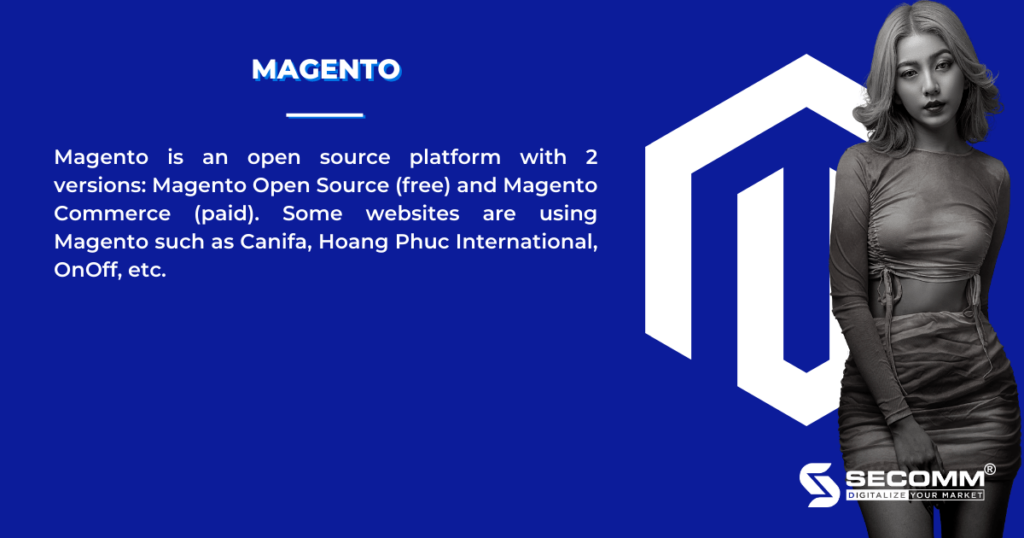
Pro:
Cons:
→ Rating: 4/4
Magento is appropriate for a wide range of fashion business types, including B2B, B2C, and B2B2C, as well as a wide range of business sizes, including startups, SMEs, and huge corporations. Nevertheless, because the cost of deploying Magento is sometimes very high, Magento is favoured by major organisations.
Magento Open Source, like WooCommerce, is an open source platform, therefore it is free to use; nonetheless, businesses must consider the following costs:
Businesses will be working directly with Magento’s development team for Magento Commerce, thus they will have to pay licence fees as well as certain additional charges such as:
A complete Magento project typically requires 3 to 6 months of deployment time, with some projects requiring up to a year. The reason for this is the complicated functioning structure and the lack of Magento experts.
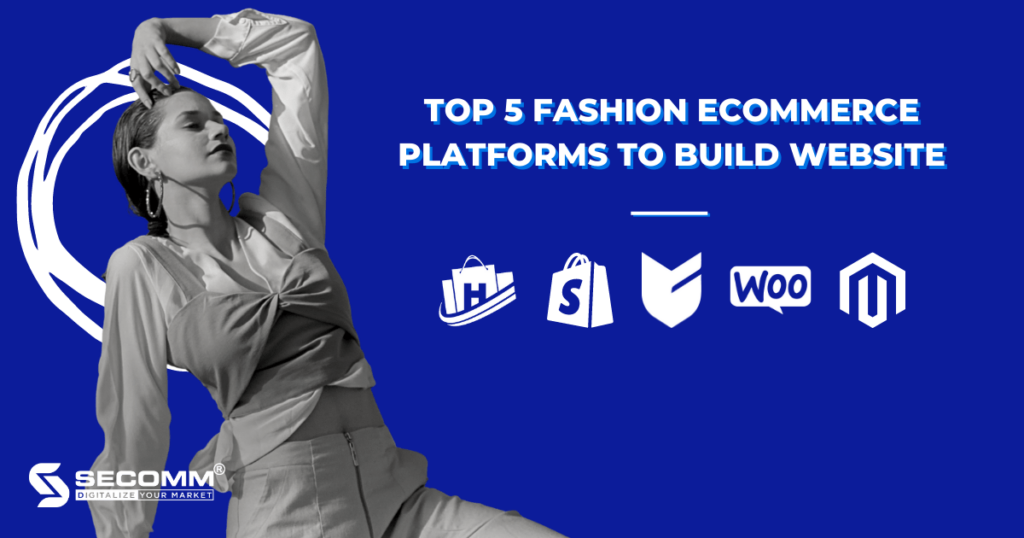
 2
2
 4,594
4,594
 0
0
 1
1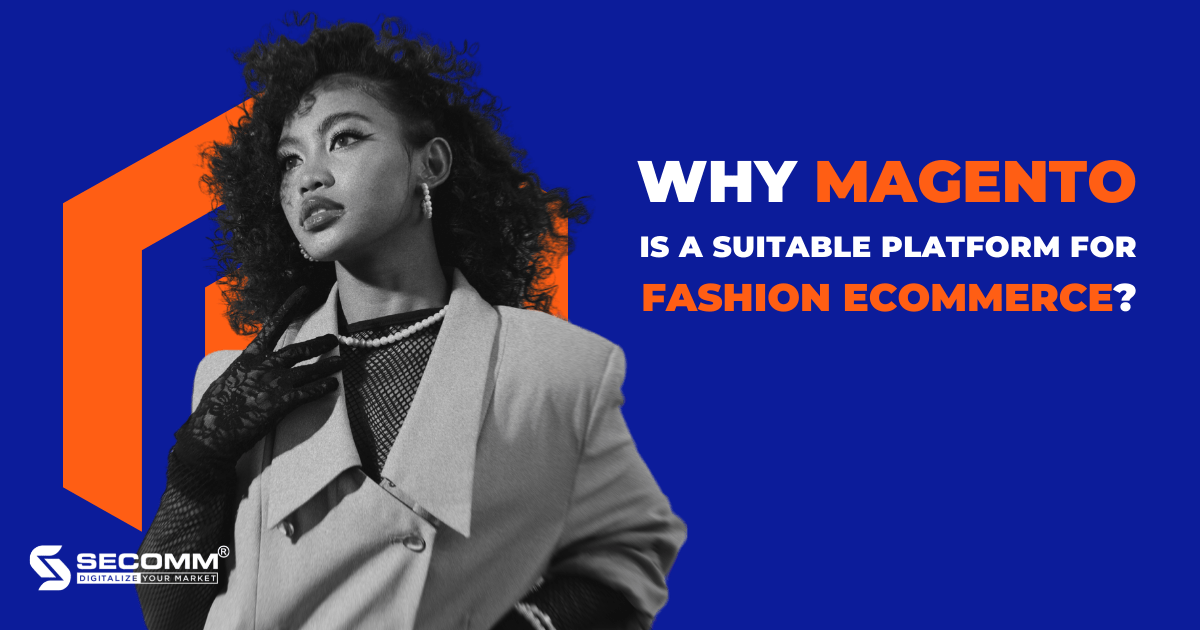
Fashion eCommerce has shown excellent development potential in recent years, with a worldwide market worth USD 759.5 billion in 2021 and predicted to reach USD 1 trillion by 2025. Clothing (+12.7%), Footwear (+11.6%), and Bags and accessories (+8.5%) are expected to increase the fastest in 2023.
Furthermore, fashion is one of the “four pillars” of Vietnam’s e-commerce economy, accounting for 43% of all online purchases, trailing only the eGrocery industry. According to the e-Conomy SEA Report 2021, 47% of Vietnamese respondents think that fashion eCommerce has become a consumer purchasing habit.
Despite the numerous prospects, this industry has multiple problems, including numerous rivals, continually changing consumer preferences, pushing firms to diversify models, Omnichannel sales to create more customer touchpoints, and so on.
As a result, to properly deploy fashion eCommerce, company managers must examine various elements, including the fundamental factor of developing a website. Among eCommerce platforms such as Shopify, BigCommerce, and WooCommerce, Magento is renowned as a platform used by many famous brands to establish eCommerce, including Canifa, Hoang Phuc International, OnOff, and others. So, why have these companies selected Magento?
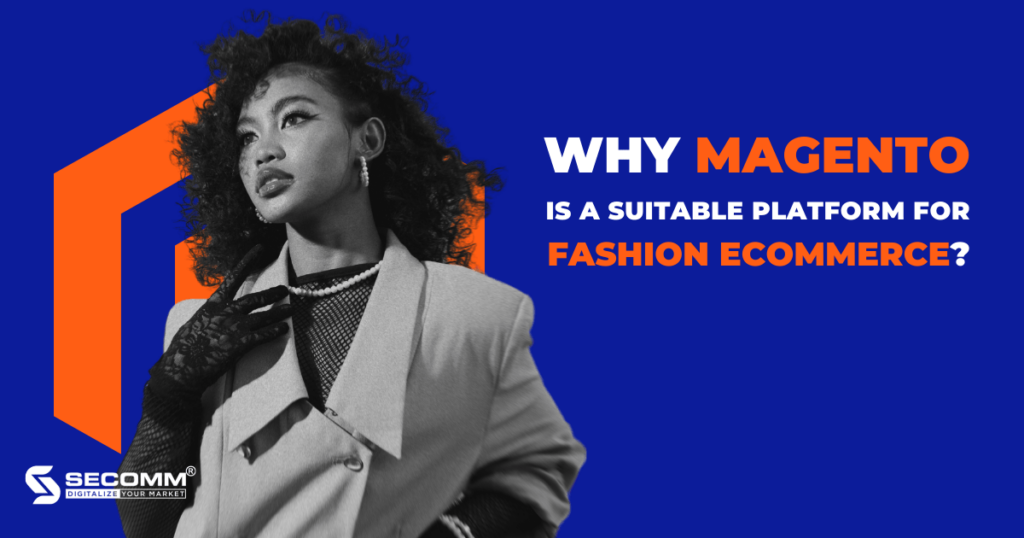
The demanding consumer base with excellent aesthetic sensibility is a common element of the fashion sector. This necessitates that fashion firms concentrate on the design of the eCommerce website interface, particularly the homepage, which must be professional and eye-catching.
The disadvantage of online fashion purchasing is that you cannot “See it with your own eyes, touch it with your own hands.” Therefore, the more detailed and colourful the image/video, the more authentic and trustworthy it will appear to buyers.
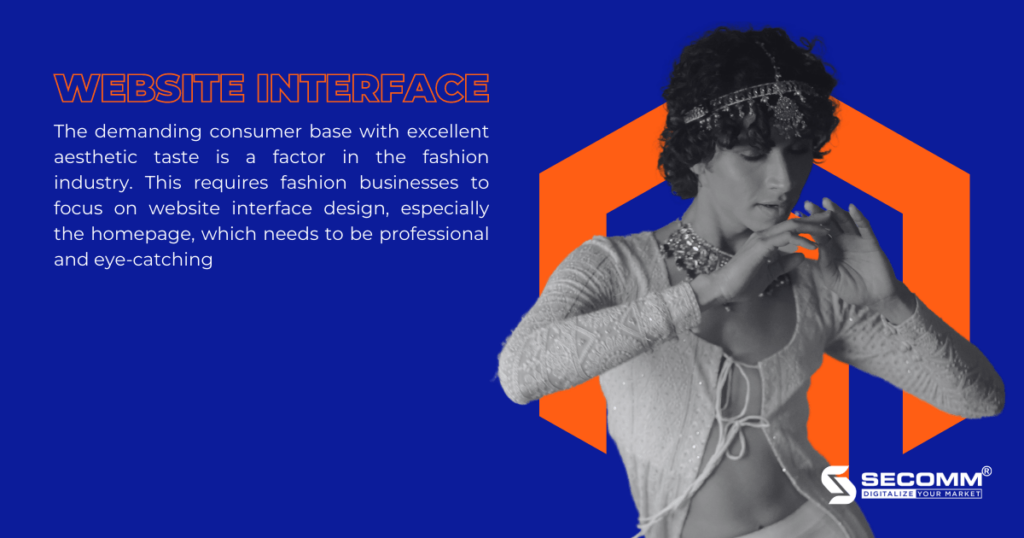
In terms of the UI (User Interface), visualisation affects the capacity of customers to engage with the website, helping to answer the question: “Has the user being able to navigate clearly from one page to another in a convenient way? “
Another website interface design is user experience (UX), from consistency in call to action button (CTA) or illustration locations, everything should be more convenient to create the most consistent experience for all website users.
Many functionalities are required for an online fashion business website to satisfy industry requirements.
The fashion sector is distinguished by multichannel sales and numerous client touchpoints. For instance, on e-commerce platforms (Shopee, Lazada, Tiki, Sendo), social networking channels (Facebook, Tiktok, Zalo, Instagram), and e-commerce websites and applications. When implementing eCommerce for fashion companies, administrators must employ an Omnichannel approach.
Usually, the fashion industry will have a lot of product categories and collections, from clothes, and shoes, to bags and accessories, so consumers’ need to search for products on the website and e-commerce app is very high. From there, businesses should build multi-layer menus and advanced product search functions by keywords or filters to serve the needs of searching and navigating customers.
Furthermore, because fashion is a highly competitive market, the more influential the communication strategies, the more orders the brand will obtain. Loyalty Programs, Livestream, Shoppertainment, Affiliate Marketing, and other fashion-related communication strategies on websites and mobile apps.
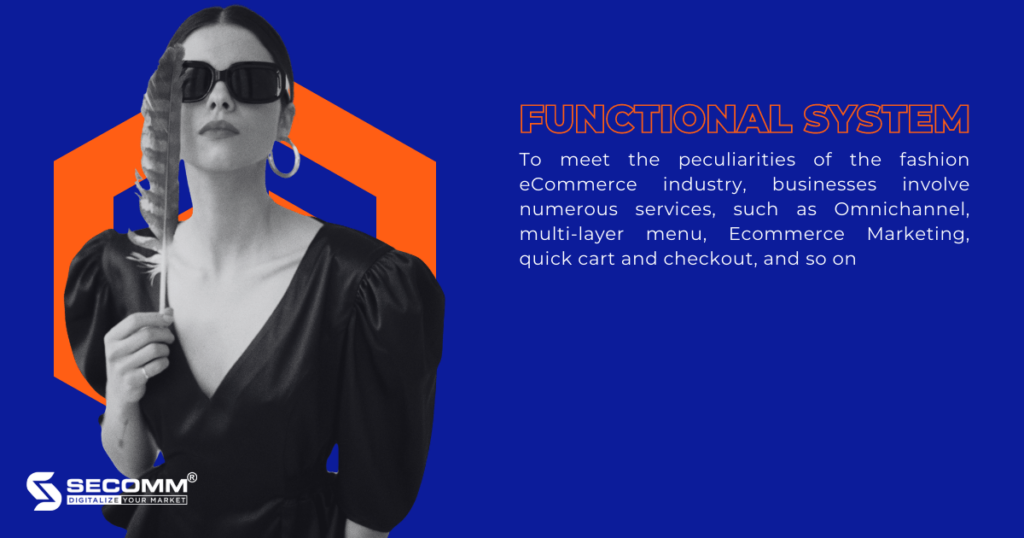
Clothing, bags, shoes, and fashion accessories are frequently low-involvement goods, thus creating a rapid shopping cart function would assist consumers to speed up the purchase process, increasing online sales for businesses.
Businesses should construct a feature to help categorise consumers to take care of and tailor the experience for each type of client in the fashion sector, which frequently has several customer groups, such as new, old, and VIP. From there, organisations will gradually use the understanding of each sort of consumer to develop better business solutions in the future.
After all, fashion eCommerce systems must frequently manage high traffic levels during peak seasons.
Businesses require a highly integrated website construction platform to properly execute fashion eCommerce, including Omni-channel, management system, payment, shipping, analytics, and reporting.
Because the fashion industry is distinct, it needs considerable coverage across all sales channels to reach many potential customers. Therefore, while implementing eCommerce, businesses have to use an Omnichannel strategy. However, to synchronise all data from front-end to back-end when deploying Omnichannel, companies require a highly linked system across all sales channels.
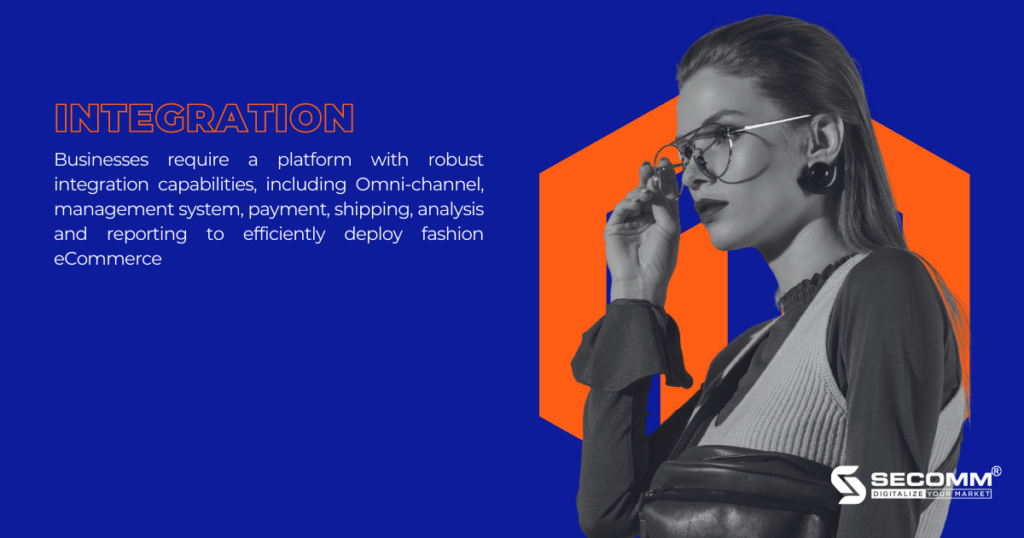
Simultaneously, fashion firms frequently utilise several third-party management systems such as POS, CRM, ERP, and BI, so businesses must find an eCommerce platform that can combine and manage all data information on” a single screen”
Furthermore, companies must vary payment and delivery methods so that clients have more options when buying fashion goods.
Finally, organisations must integrate analytics and reporting tools to provide real-time measurements with the most user-friendly reporting table. From there, firms could provide more practical guidance in the future.
Fashion businesses will have many different sizes, from startups, SMEs (small and medium enterprises), and new entrants to large corporations. Moreover, each business will have a different operating model, such as B2C, B2B2C, and so on.
All sizes and operating models will have unique requirements for each stage of brand development, so businesses need a platform to accompany them throughout the journey, preventing the circumstance of switching platforms consumes time and money when firms install eCommerce.
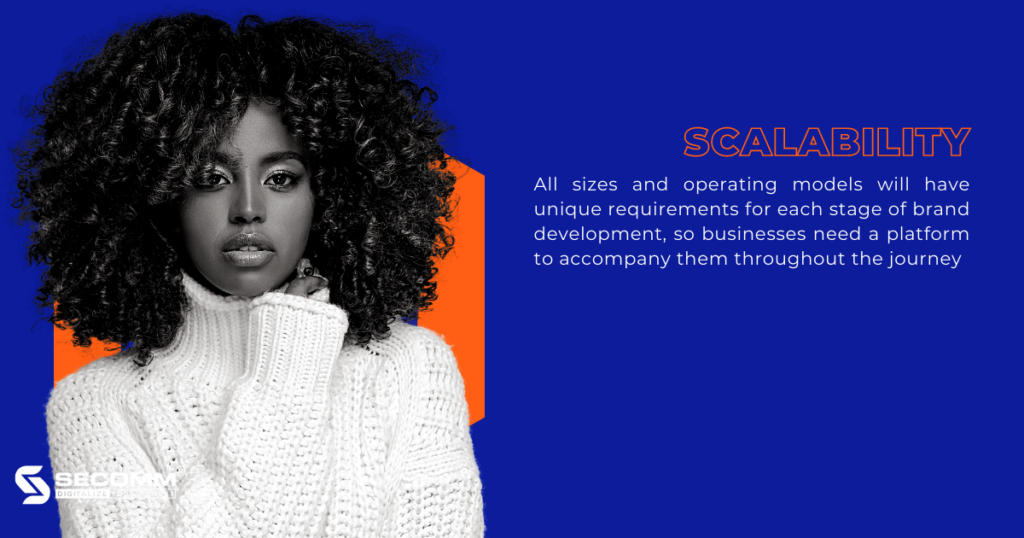
In summary, companies require a comprehensive platform to efficiently implement fashion eCommerce for the long run, including website interface, functional system, integration, and scalability.
When designing a fashionable eCommerce website interface on the Magento platform, businesses have many choices, including using existing themes, customising themes, and designing their own interface.
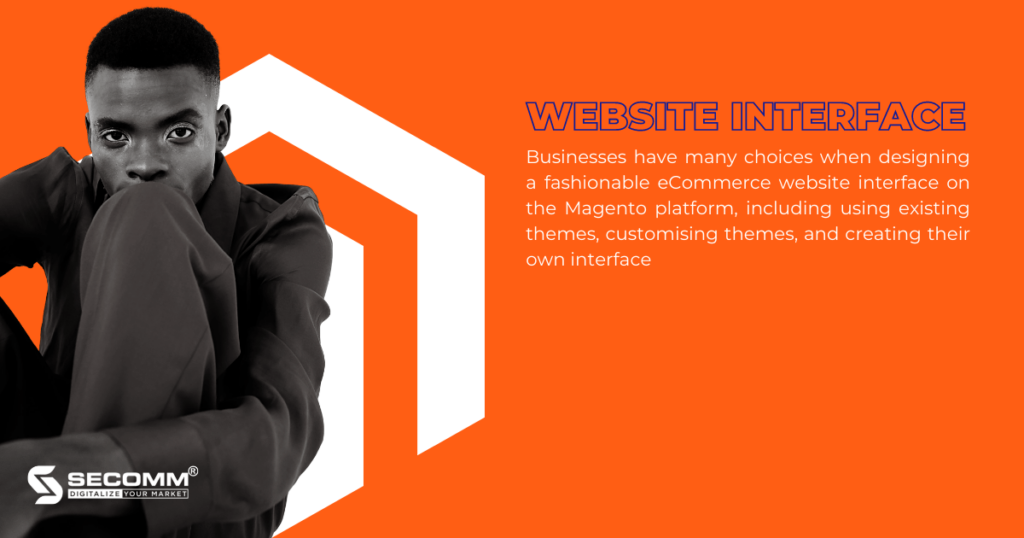
For using existing themes, companies may find these in the marketplace, developer community, or partner for Magento-specific themes in the fashion industry. This helps businesses reduce the expense of interface design, but it limits firms’ brand positioning because the interface is easily imitated by other websites.
For customising themes, businesses can save money and add brand identification aspects like colours, fonts, layout and so on. However, to efficiently set up and customise the website interface, businesses require a team with significant knowledge and experience.
For designing their own interface, businesses will have a “tailored” website for their fashion brand. However, this will necessitate a more significant investment in development expenditures and a more competent workforce.
When using Magento to develop an eCommerce website, most fashion businesses often choose a customised theme or design their own interface to support a centralised eCommerce business.
The Magento platform has all the capabilities needed to create a comprehensive eCommerce website, from essential to complex. At the same time, this platform permits the development of custom functions to tackle unique difficulties in the fashion business.
Basic features that assist businesses in running an efficient and seamless fashion eCommerce website, such as:
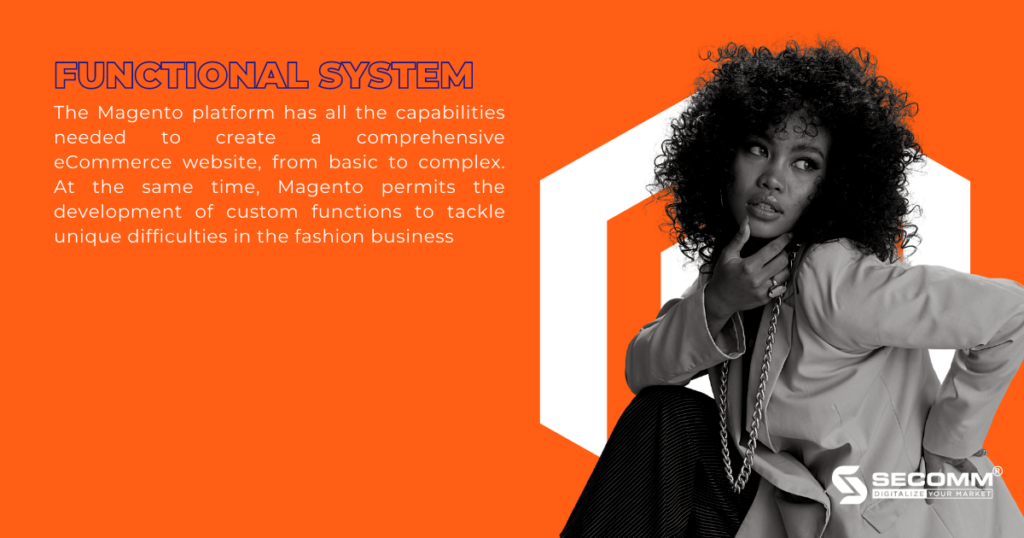
Advanced functionality that enhances the online shopping experience for consumers, such as:
Specific functions are those that assist businesses in dealing with fashion industry issues, such as:
In general, Magento can create any sophisticated functional system, with infrastructural development before and after depending on the demands of each organisation.
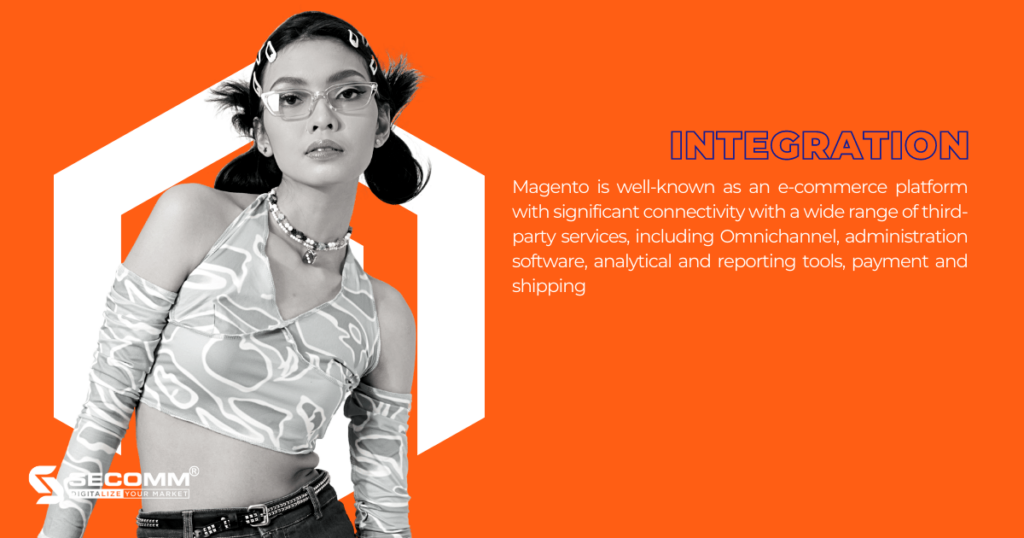
Magento is well-known as an e-commerce platform with significant connectivity with a wide range of third-party services, including Omnichannel, administration software, analytical and reporting tools, payment and shipping.
Magento allows organisations to extend from one website to many distinct websites on the same system to satisfy the requirements of company-scale development. This implies that organisations can access and manage data from a single central Magento system.
With Magento’s language-switching functionality, businesses can create an attractive eCommerce website with customer-friendly content and languages. Furthermore, the Magento system enables businesses to effortlessly exchange currencies, allowing them to grow into new markets in a variety of nations.
From then, Magento can help businesses scale and function effectively without switching to another eCommerce platform from the beginning of business through the period of expansion.
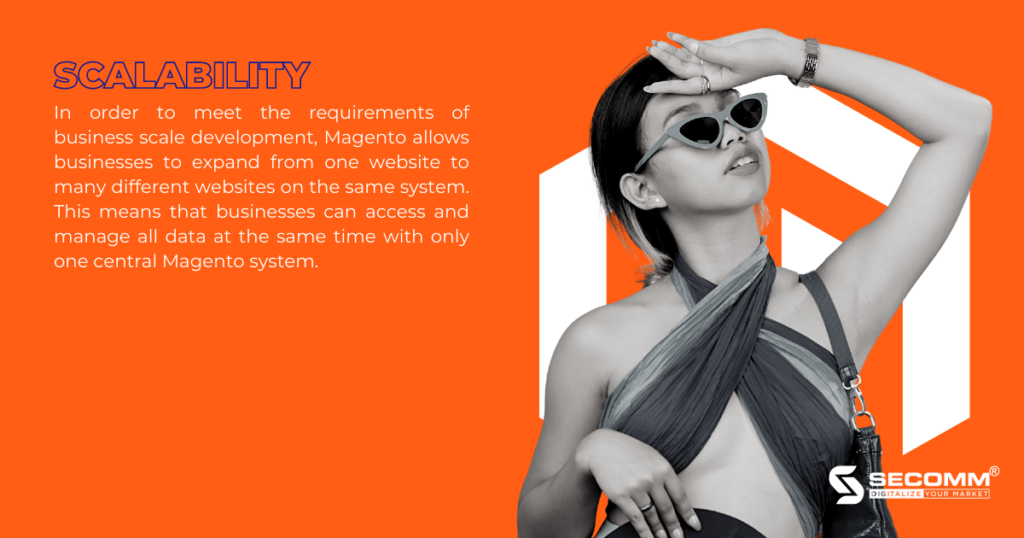
In a nutshell, Magento is an e-commerce platform that caters for the demands of all types and sizes of fashion businesses, from website interface design and functional system development to integration and scalability. However, there are numerous challenges that firms must overcome when implementing fashion eCommerce with Magento, such as high installation costs, long construction times, and the requirement for highly skilled employees.
Recognising the aforementioned business difficulties, SECOMM provides free consultation services on technology and resource solutions for each company.
Contact SECOMM now for more details!
 2
2
 6,170
6,170
 2
2
 1
1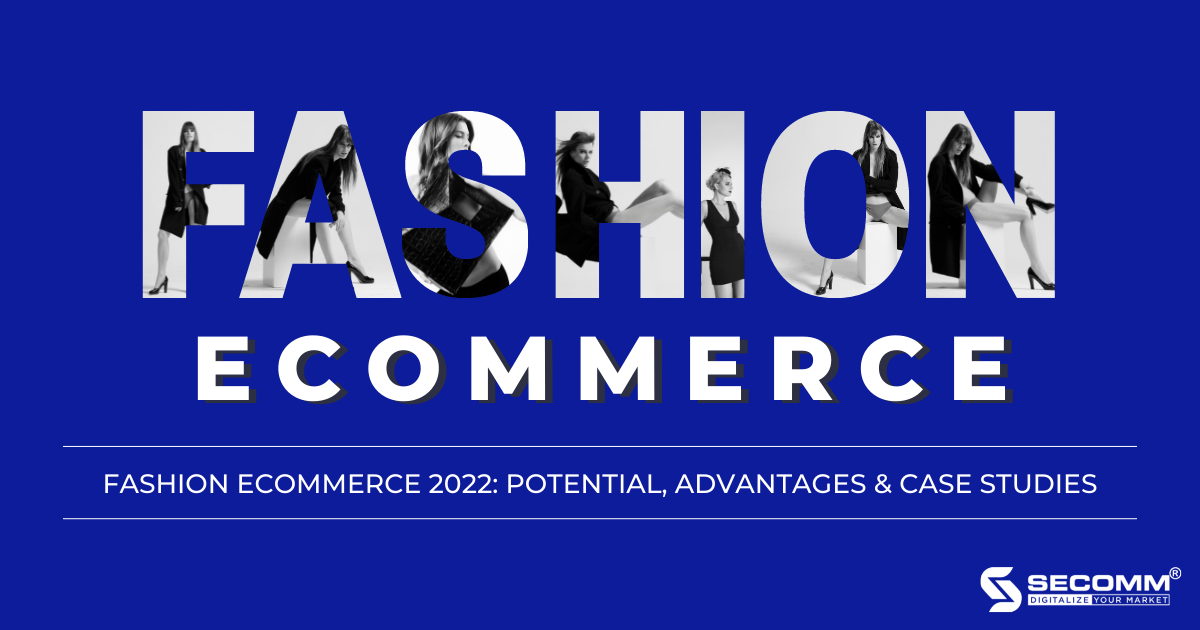
eCommerce has become an essential business model that fashion brands must utilize not only to survive during the COVID-19 pandemic but also to assist companies in adapting to changing customer behavior, providing competitive advantages for future breakthroughs.
As a result, fashion eCommerce has become a crucial business trend for many fashion businesses today, from start-ups to “giant” corporations.
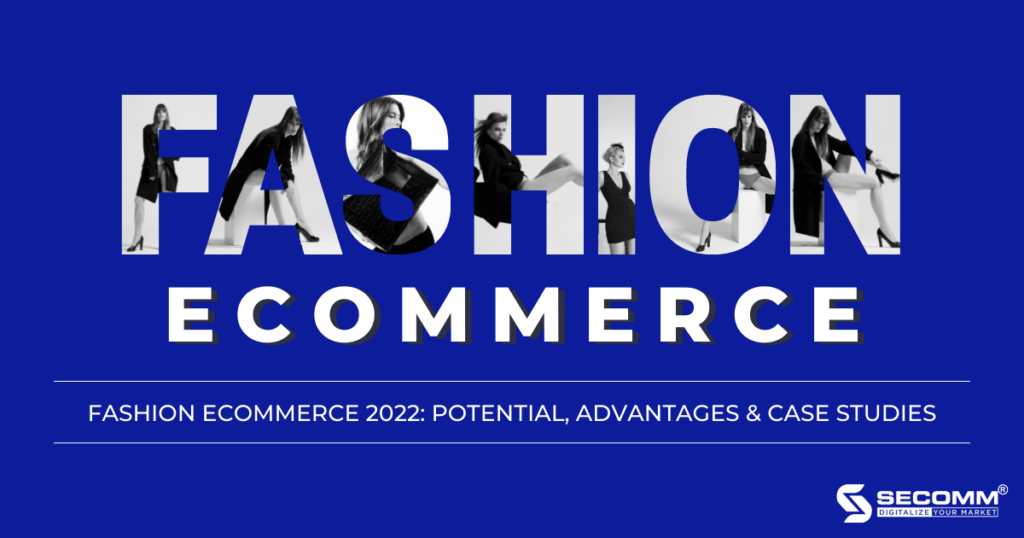
According to Statista, the compound annual growth rate (CAGR) of the fashion eCommerce market is predicted to be 14.2% from 2017 to 2025. The CAGR is forecast to reach a value of USD 1 trillion by 2025, in which the US market accounts for about 20%, equivalent to 204.9 billion USD.
In the Vietnamese market, fashion eCommerce is the second most important sector, just after eGrocery (The Vietnam eCommerce White Paper in 2021).
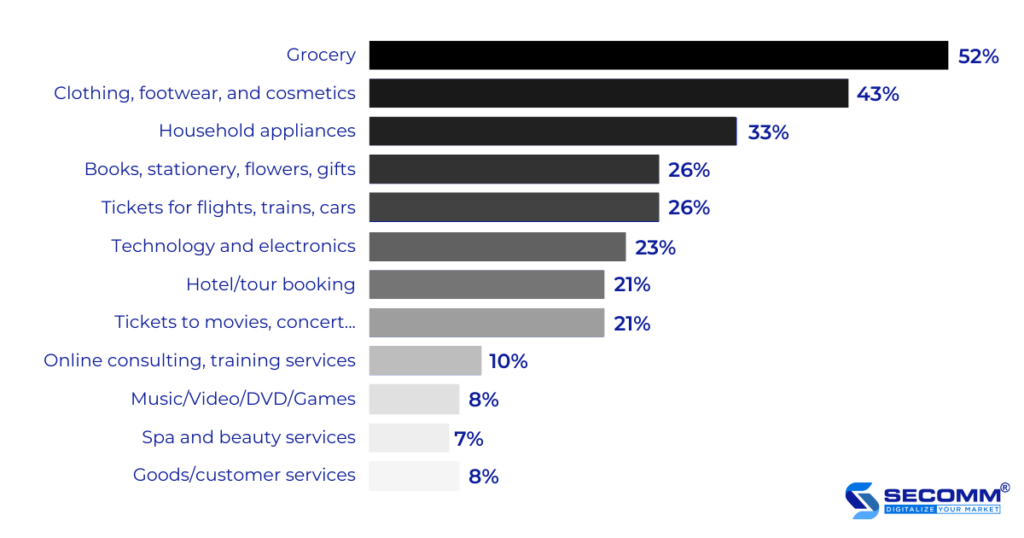
The use of eCommerce will provide fashion firms with a new sales channel, along with offline commercial activity in showrooms. For geographical factors, eCommerce transcends place and time to allow customers to purchase whenever and wherever they choose.
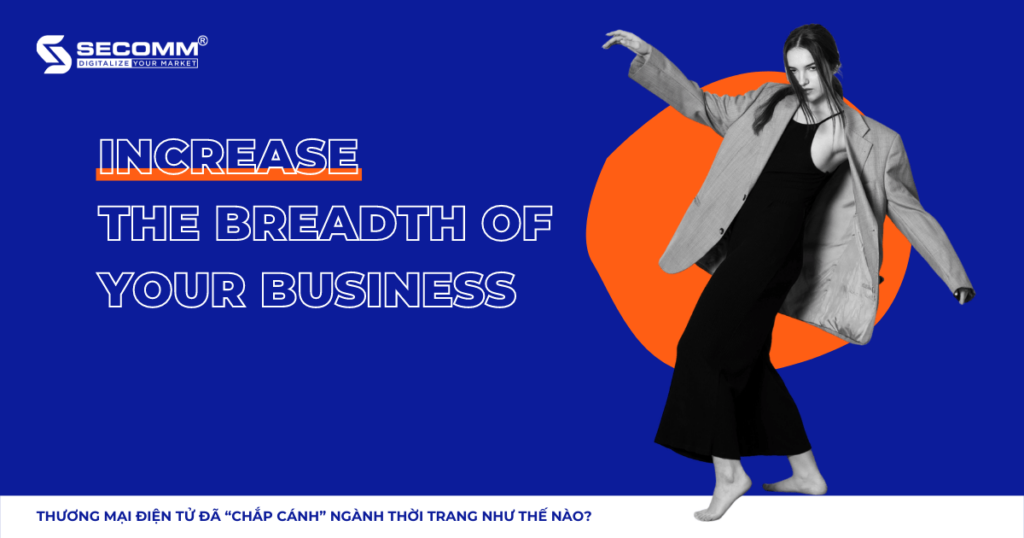
Simultaneously, eCommerce is a prominent avenue for reaching customers, particularly in the sphere of fast fashion for women. Marketing activities such as Livestream, Shoppertainment (Shopping with entertainment), Affiliate, and so on are more effectively carried out, leading to the extension of the commercial scope for enterprises.
Following the COVID-19 epidemic and the social distancing order, consumer behavior has shifted dramatically, with the transition from physical to online buying rising over time in all categories. In the fashion business alone, the percentage of online customers climbed from 18% to 48% in 2020–2021. As a result, it is critical for fashion businesses to implement eCommerce.
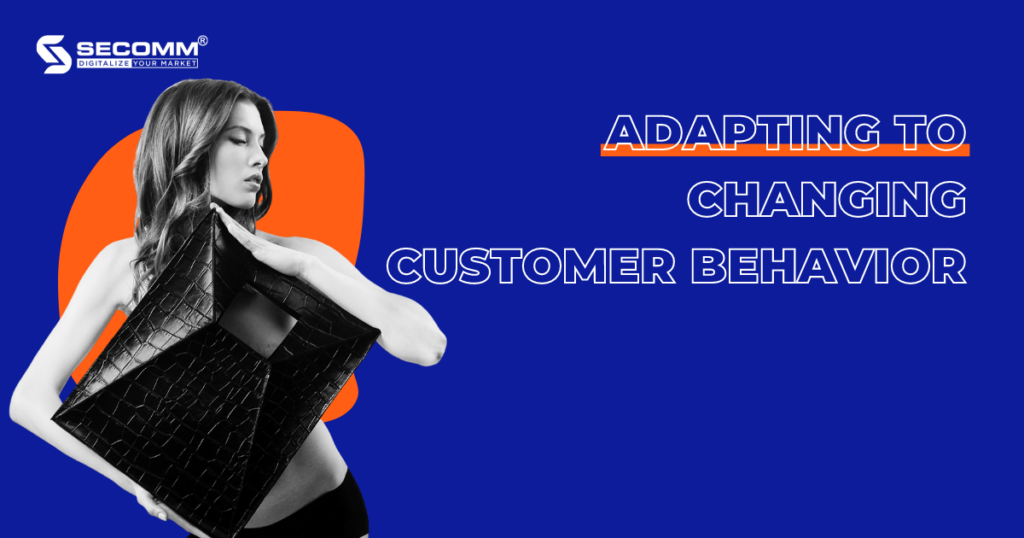
After the epidemic, consumer behavior altered drastically, such as waiting until D-Day to purchase items. Furthermore, by utilizing eCommerce technologies, organizations can follow, analyze, and synthesize the consumption behavior of each target group, something offline purchasing cannot accomplish. This ensures that businesses always have enough aggregated and forecasted data to implement business plans.
When technologies that improve user experience in e-commerce are used, customer purchases will be made faster.
Visual experiences such as photos, movies, virtual reality experiences, and so on provide customers with full product information and expertise, enabling a speedier purchasing process. VR / AR technology enables people to shop for garments, accessories, and shoes online in the same way they would in a store.
For example, the American Apparel company has used AR to show shoppers more product information, like detailed descriptions, availability, colors, and buyer reviews.
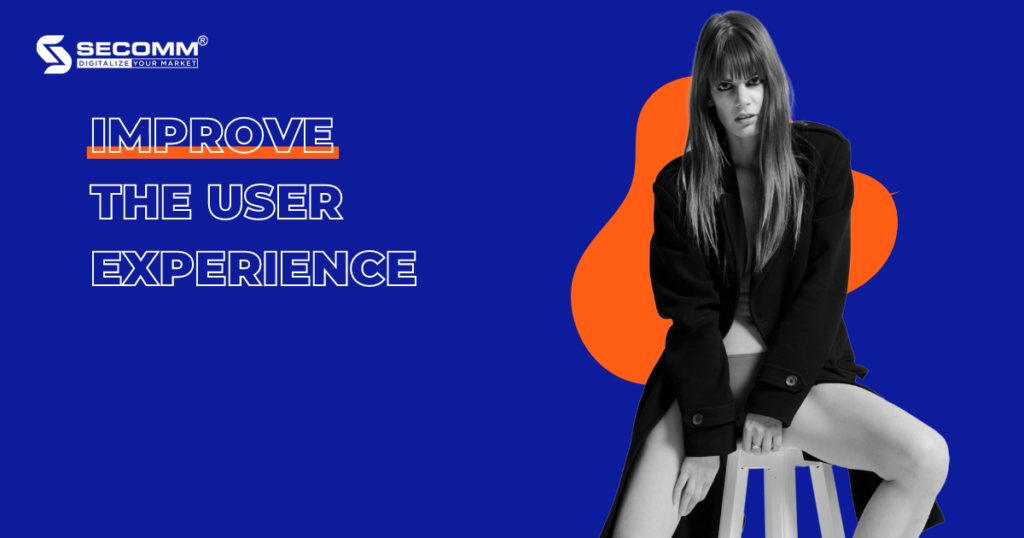
eCommerce allows businesses to tailor the experience for consumers by collecting, evaluating easily, and summarizing the consumption habits of each target group, often with the following features: Recommend products, Products seen, and so on.
eCommerce provides a seamless experience for customers across many channels such as social media (Facebook, Instagram, Tiktok, Zalo, etc), eCommerce marketplace (Shopee, Lazada, Tiki, Sendo, etc), eCommerce website, and mobile app.
Shein is a Chinese eCommerce site created in 2008 that specializes in apparel and accessories. With the motto “everyone can enjoy the beauty of fashion,” the company pushes to give consumers a diverse selection of product options. Shein is currently regarded as a fashion “empire” with a valuation of $ 100 billion – more than Zara ($ 69 billion) and H&M (23 billion) combined.
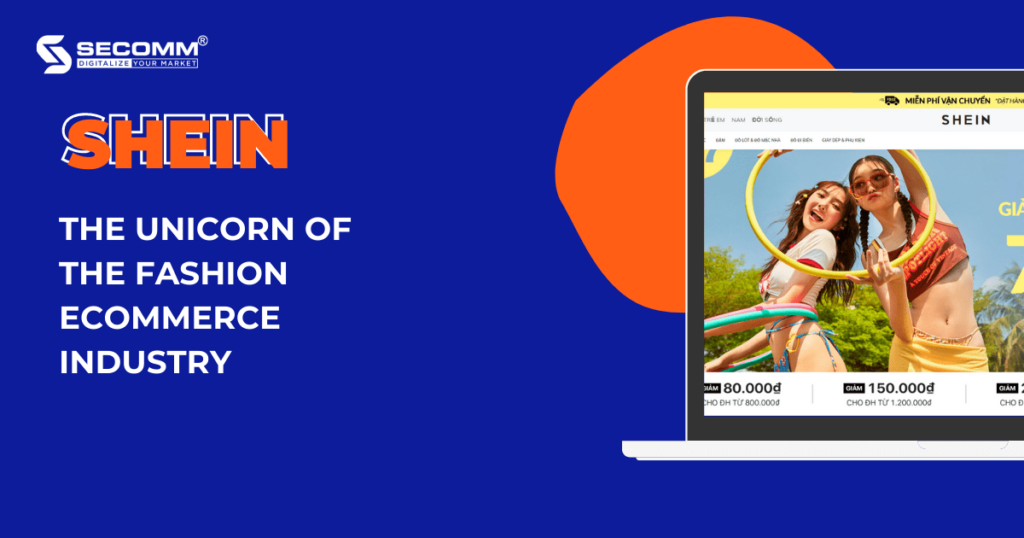
Shein focuses on the youthful client sector of Gen Y and Gen Z, who use the Internet often. As a result, this brand has used technical components to reach more consumers in an appropriate and exact manner.
Shein created an eCommerce system that included a website and a mobile app to target overseas markets such as Europe, America, Australia, and the Middle East. Shein then advocated Social Commerce, Ecommerce Marketing, Affiliate Marketing, KOC, and other tactics to improve brand awareness and engagement.
In 2021, Shein’s mobile app exceeded 7 million monthly active users in the US alone (Airnow Data), and the hashtag #Shein garnered more than 10 billion views on TikTok (Jing Daily). Revenue reached $15.7 billion in 2021, up 60% from 2020 ($9.8 billion). It can be seen that Shein is a clear example of the effective application of eCommerce to capture market share in the fashion industry.
Coolmate is a menswear startup that was established in 2019. Coolmate is a mix of the words “cool” and “mate,” which means that the brand’s major purpose is to be a fashion buddy for customers. After barely two years of operation, this company received a $500,000 funding call from Sharktank Vietnam.
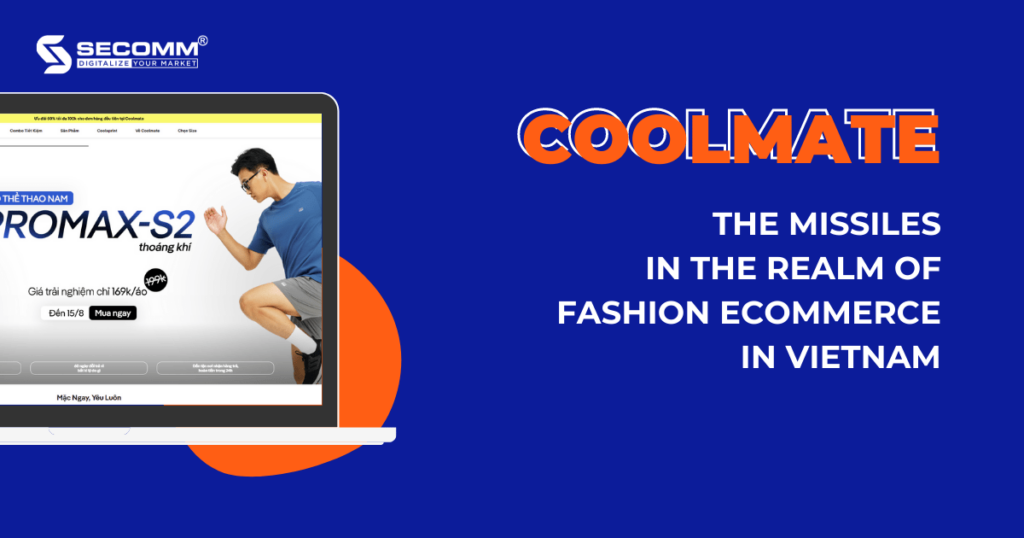
Coolmate utilizes the Direct to Customer Ecommerce (D2C eCommerce) model and concentrates on developing its own fashion website to provide a quick and cost-effective buying experience. At the same time, this brand prioritizes product quality, which is 100% made in Vietnam and meets export standards at low costs. Furthermore, to implement e-commerce faster, Coolmate advocates thoroughly apply the strategy of Ecommerce Marketing, Affiliate Marketing, Email Marketing, etc.
Aside from the $500,000 agreement for a 12.5% interest, 2.5% of the consultancy shares pledged, this fledgling business has other noteworthy statistics. Coolmate’s sales will reach VND 139 billion in 2021, up 3.5 times from 2020, with revenue expected to reach VND 440 billion in 2022 and an IPO (Initial Public Offering) by 2025. In general, eCommerce has considerably contributed to Coolmate’s development, as well as providing the groundwork for fashion businesses to follow to grow by market trends.
Yody (previously Hi5) is a family apparel label that was founded in 2014. To provide Vietnamese fashion goods made of high-quality materials to customers in various regions of Vietnam and throughout the world. Yody now employs over 700 people and has 90 outlets around Vietnam.
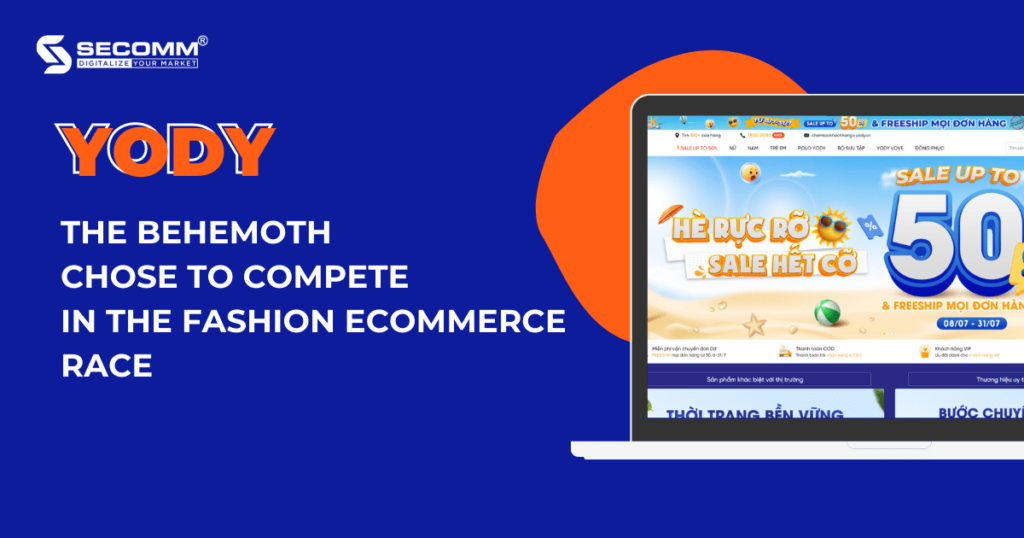
This fashion brand prioritizes the “tripod” of human resource development, product quality, and technology investment. Yody focuses on talent recruiting and culture training to engage employees in human resource development. In terms of products, Yody designs for comfort and convenience, and can be utilized in various situations, such as going to work, going out, attending meetings, and so on.
Regarding technology, Yody focuses on implementing an online sales strategy across Omni-channel such as eCommerce marketplaces, an eCommerce website, Facebook, Livestream, and so on to compete in the eCommerce race, as well as adapting to changing consumer behavior.
In 2016, Yody was selected as one of the ten outstanding young start-ups in Vietnam. By 2021, Yody’s physical sales will have dropped by 65%, but the internet segment has increased by more than 10%. Therefore, the company continues to aim to increase online revenue by 20% in the next year.
In a nutshell, how to apply fashion e-commerce will depend on the size and strategy of each company, but eCommerce is a prerequisite for successful business in this industry.
 2
2
 6,973
6,973
 1
1
 1
1Subscribe to get the latest eBook!
Hotline